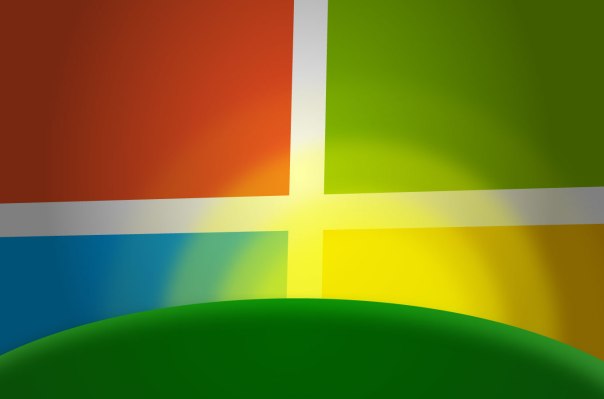This morning Microsoft CEO Satya Nadella released an internal memo detailing his vision for the company’s future. The new chief executive used the missive as a way to signal an intentional break with the past.
That break? Sharpening its “devices and services” strategy to focus on “productivity and platforms.”
I spoke with Nadella this morning and asked what the change in language meant. Devices and services, he said, is equivalent to his oft-repeated “cloud-first and mobile-first” moniker. Productivity and platforms is more “specific” regarding what Microsoft can bring to the market that is unique. Other companies can be mobile-first and cloud-first, he added, meaning that while operating according to those principles is likely intelligent, it won’t set Microsoft apart from its competition.
Component to the idea of building something unique is the simple fact that large technology companies are competing across a rising set of services, making them more similar even as they look to set themselves apart.
Productivity and Platforms
Microsoft, Nadella noted, lives in a world of platform heterogeneity, reaffirming his intent to build everywhere.
Nadella wants to do his “best work, even on the iPad.*” This means that non-Windows-based experiences won’t be set at a feature or design deficit when compared to what the company builds for its own platforms. So if Microsoft intends to compete across platforms as other firms do, how can the company differentiate itself, as Nadella indicated was his goal?
“All strategy gets eaten by culture.”
In his view, the company has to build “bar-none [the] best productivity apps.” His point appears to be that Microsoft’s productivity assets are market-leading (correct) and thus one of its competitive advantages is leveraging the Office suite across the platforms that it doesn’t control over others. The success of Office for iPad is a good indication that Nadella, at least in the short-term, is correct.
Nadella is hitting the gas in this regard, with the launch of Office for Android approaching. But productivity is only part of Microsoft’s product line up, so could it provide a company-wide lift? In a sense yes. If Office 365 excels across platforms, it could bring more users into the larger Microsoft services orbit, aligning them more closely with its platforms. And platform momentum brings developers in from the cold.
The opposite is true as well, naturally: Wherever a modern technology company operates at a disadvantage, or fails to complete, it implicitly limits its platform buy-in from consumers and businesses.

The Cloud
Moving to the cloud, it’s worth keeping in mind that the price of cloud storage is quickly trending to zero, spurred in no small part by the price war underway among Microsoft, Google and Amazon.
Will the price of cloud computing itself follow suit? Nadella said that there is a “broad commoditization” of services of that sort and that players in the market will be “aggressive” in their pricing, perhaps even subsidizing some offerings to grind up market share. Nadella did indicate that there will be an “equilibrium” following the pricing conflicts.
It remains to be seen how much prices can decline before they resemble zero. To understand the market, view storage from the perspective of Amazon‘s recently launched cloud storage product that will provide businesses users 200 gigabytes for $5 per user per month. Apply that to all services vended across the Internet in which the operating costs rest with the provider, and not an external party.
Spotify, for example, can’t decrease its price over time to fend off Xbox Music, because its costs are largely externally fixed by record companies. But with cloud storage and computing, the companies that are selling the product have tens of billions in cash and don’t care about short-term margins for these services.
If lowering your price will get more developers through the door building with your tools and on and for your platform, you do it. To paraphrase the old trend cliché: Prices are down and to the left.
Differentiation will come, in Nadella’s vision, from the players who add the most value on top of the more basic services. This mirrors the argument that the basic service layers — compute and storage and so forth — cannot be viewed as differentiation points in the future, current market dynamics aside.
You don’t issue a call to action for change when none is needed.
Finally, Nadella noted that “all strategy gets eaten by culture,” underscoring his letter’s mention that previous methods of business would not be held as sacred at Microsoft. As a company, Microsoft is known for a history of internal conflict. (Dilbert here is canonical.) After decades of stability, Nadella’s point appears to be that Microsoft’s former culture would consume his new vision for the company. As such, the culture itself has to change.
Implicit to Nadella’s note is the point that the Microsoft that existed before, which generated mammoth profits, is not well-fitted to where the market is today and will be in the future. You don’t issue a call to action for change when none is needed.
The document is a decent encapsulation of Nadella’s view of what Microsoft should become: Quicker to market, stronger of product, and competitive everywhere. This is no small challenge. It’s now up to Nadella not only to live up to his own vision, but to convince more than 100,000 employees to do the same.
*An earlier version of this post omitted the word “even” from Satya’s comment. My notes, taken during the conversation, missed the word. A transcript of the call was used to check the quote, and add the missing word. I apologize for the confusion.
